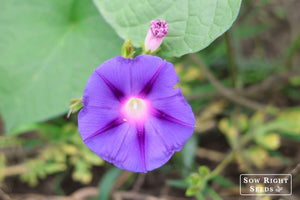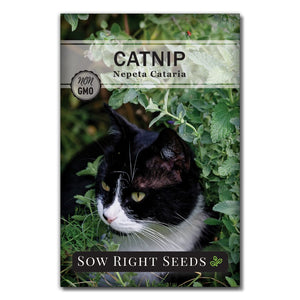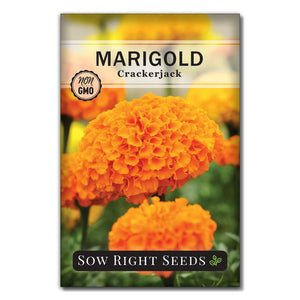6 Natural Ways to Get Rid of Cutworms, Hornworms, and Cabbage Worms
PestsSomething is eating your vegetable plants and is stripping leaves and blooms in record time. Though they aren't vicious creatures, their appetite is and can quickly consume and destroy all of your hard work. So what are these worms, and what can you do to control them?

Destructive Caterpillars to Watch Out For in Your Vegetable Garden
There are a number of cabbageworms, cutworms, and tomato hornworms that plague home gardens year-round. These pests aren’t really worms at all, but they are the caterpillars (or larvae) of various moths or butterflies. And, they can quickly eat up all of your hard work seemingly overnight. We'll cover the three main groups of the most destructive caterpillars to get rid of.
Cabbage Worms
Cabbage worms include cabbage loopers, diamondback moths, and imported cabbage worms. Each one of these types of cabbage worms looks a little different but are usually a light green color. Cabbage worms will eat up almost any cole crop or cruciferous vegetable, like broccoli, kale, cabbage, Brussels sprouts, mustard, or cauliflower. When you see white butterflies in your garden, it's time to look for cabbageworm eggs. There are also cabbage looper moths and diamondback moths that come out at night. These moths and butterflies won't damage your plants, but they will lay eggs.

Cutworms
Cutworms refer to a variety of caterpillars. These are the larvae of multiple species of moths. Cutworms feed on a large variety of vegetables, including asparagus, beans, crucifers, carrots, celery, corn, lettuce, peas, peppers, potatoes, and tomatoes. Cutworms are smooth and about two inches long. They wrap around the plant stem and feed on it until it is cut off.

Tomato Hornworms
Tomato hornworms are the largest of all the caterpillars you'll find in your garden. They are easier to spot because of their size, but can still blend in with the foliage. Tomato hornworms are fond of tomatoes, of course, but also other members of the nightshade family, including eggplant, peppers, and potatoes.

Controlling Hornworms, Cutworms, Cabbage Worms & Other Pests in Your Garden
If your crops are struggling because you’ve got an infestation of caterpillars, we’ve got some options to help you regain control over your garden. Some of these methods will help with other pests, too! So whether you have cabbage worms, hornworms, or cutworms, these effective methods will eliminate them all.

6 Ways to Eliminate Caterpillars, Hornworms, and Cutworms
1 - Pick them off
- Don’t be squeamish! Picking off cutworms and caterpillars is the simplest way to remove these pests immediately. And we do recommend wearing gloves. If you’ve only got a few plants, pick off any caterpillars or eggs you see. Eggs are easy to wipe away, but caterpillars will need to be removed. Squish them or drop them in soapy water to kill them. Check your plants daily and be sure to turn over the leaves and check in the veins and little hidey holes. Sometimes, they will curl and drop to the base of the plant when you turn over a leaf, so check everywhere. You can even use a blue light at night to find them when they're active.
2 - Cover your plants
- Insect netting with hoops can keep moths and butterflies from landing on your plants and laying eggs. High-rise hoops are available for tomatoes or other tall crops. Cut the netting to size for each bed and tuck it in to keep critters out. Remove row covers as needed for care or harvesting. On plants that need pollinators, remove covers when plants start to flower.
3 - Companion planting
- Planting herbs and flowers strategically can help deter worm infestations by attracting beneficial insects. Try planting thyme, marigold, and nasturtium near your cole crops to keep cabbage worms at bay. Basil, oregano, and thyme are good companions for tomato plants.
4 - Encourage Natural Predators
- Leave natural enemies alone. Lady beetles, soldier bugs, wasps, and pirate bugs can help you protect your plants by feeding on these worms. If you do see a hornworm that has a white cocoon on its body, it has been attacked by a parasitic wasp. These wasps help keep the hornworm population under control. This is the one case where you’ll want to leave the worm alive. A parasitized hornworm eats only a fraction of the plant that a healthy worm does, so it’s up to you whether you want to remove it completely from the plant or relocate it nearby.

5 - Clean up your garden
- Keep any crop residue to a minimum and remove it from the plants so that cabbage worms won’t be able to survive the winter. Good weed control can also eliminate other host plants on which these pests live. Maintaining a three- to four-foot buffer of dry soil around the garden's edge can also help discourage these pests.
6 - Pesticides
- If you need to use a pesticide, there are some organic options that will be less harmful to you and your garden.
- Neem oil is one popular option for keeping tomato hornworms at bay. Learn how to use neem oil for effective pest control.
- Bt (Bacillus thuringiensis) is a naturally occurring bacterium that specifically targets caterpillars. It is very effective when it is applied at the right time. Read more about using Bt in your garden.
- Always follow the instructions on the label and make sure any pesticide you choose is appropriate for the pests you’re trying to control and also for the plants you’re applying it to.
After your growing season is over, remember that proper crop rotation is crucial to keeping pest and disease populations down. Cultivate the soil after pulling up your plants in the fall to expose the pupae underground. In the spring, plant something completely different in the area and start all over again.
Chickens will gladly help you clean the area out, too. Let your chickens forage in the garden, and they'll enjoy the tasty bugs.
With a little work, you’ll have those destructive cabbage worms, cutworms, and tomato hornworms under control in no time, and people will be asking you how you did it. Good luck, and happy gardening!








How do you make a mixture of baking soda and cabbage?
I’m growing brussel sprouts. I’m using neem oil because they started getting a fungus that were making the leaves rot. Now the brussel sprouts are getting black specks on them that look like mold. Is there anything else I can use on them or do I just need to pull them up?
Leave a comment